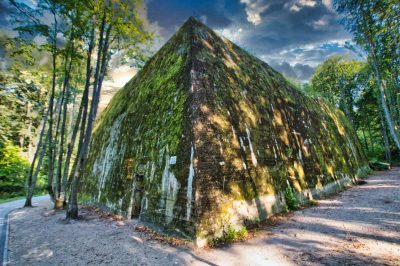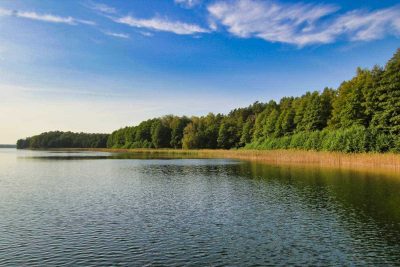Today we take you to Frombork or Frauenburg, as the place was called in German in former times. Never heard of it? With only 2000 inhabitants, Frombork is not very big, but there is no shortage of sightseeing attractions. Especially the Frombork Cathedral is well known all over Poland and historically of great importance.
However, church history is not the reason why Frombork is one of the most popular excursion destinations in northern Poland. The village owes this to its unique location on the Vistula Lagoon, its famous Cathedral Hill and Nicolaus Copernicus (polish: Mikołaj Kopernik), who lived here for several years. No other town in Poland (apart from his birthplace Toruń) is so closely connected with his name as Frombork.
In the following article we would like to introduce Frombork to you in more detail and show you that there are still many exciting places to discover outside the cathedral! And if you are interested in other places in the Warmia and Masuria, then take a look at our list of the most beautiful places in the region.
History of Frombork
While Lidzbark Warmiński can be called the secular heart of the old Warmia, Frombork was its most important spiritual center. From the 13th century onwards, the small town was the seat of a bishop, only a few years ago it was moved to Olsztyn.
Today’s Cathedral Hill was ideal for building a castle here, because the view reached into the distance (even today you can see as far as the Russian oblast Kaliningrad from here) and at the same time was close to the water, so that you could quickly reach the Vistula Lagoon by boat. A little later a small town was built at the foot of the castle, which still exists today. After the Teutonic Order had to give up the Warmia in 1466 in the course of the Second Peace of Toruń, Frombork also came under the sovereignty of the Polish crown. However, the town continued to be part of the independently administered Principality of Warmia.
Dramatic escape
This only changed when the village fell to Prussia in 1772 in the course of the First Polish Division. Until the end of the Second World War, the village was part of Prussia or the German Empire, before a tragedy took place here in the last months of the war. Numerous Germans tried to flee from the advancing Red Army and ventured across the frozen Vistula Lagoon. Many broke in, froze to death or starved to death.
Since then Frombork, as the town is called today, has belonged to Poland and is now a popular tourist destination due to its many historic buildings.
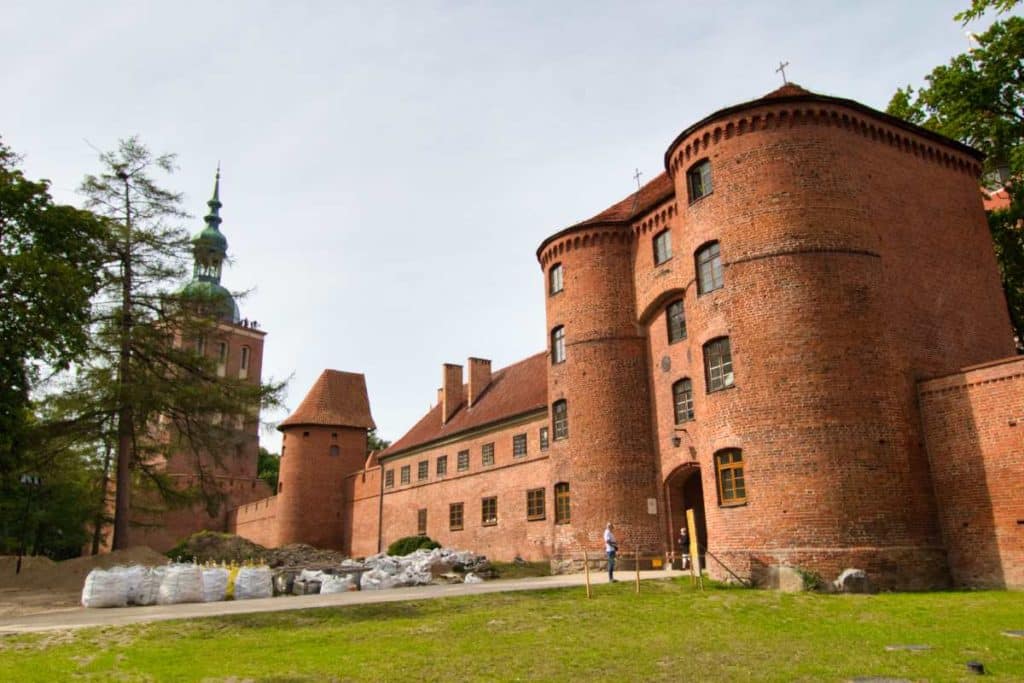
On the way on the Cathedral hill
The Cathedral Hill was first mentioned in a document as early as 1278. Due to the natural elevation above the Vistula Lagoon, which allowed for a wide view, the place was easy to defend and therefore perfect for a massive mixture of castle and cathedral. The cathedral of the bishops of Warmia is the most important landmark of the reagion.
Discoveries in the bell tower
In addition to the cathedral, the 70 meter high bell tower is of particular interest to visitors. There is a small planetarium here. An artistically curved spiral staircase leads to a viewing platform, which offers the most beautiful view of the town and the neighboring cathedral. Modern art is also shown in the tower. Interesting detail: a Foucault pendulum dangles from the ceiling as part of an art project that moves back and forth, but was not known in the times of Copernicus.
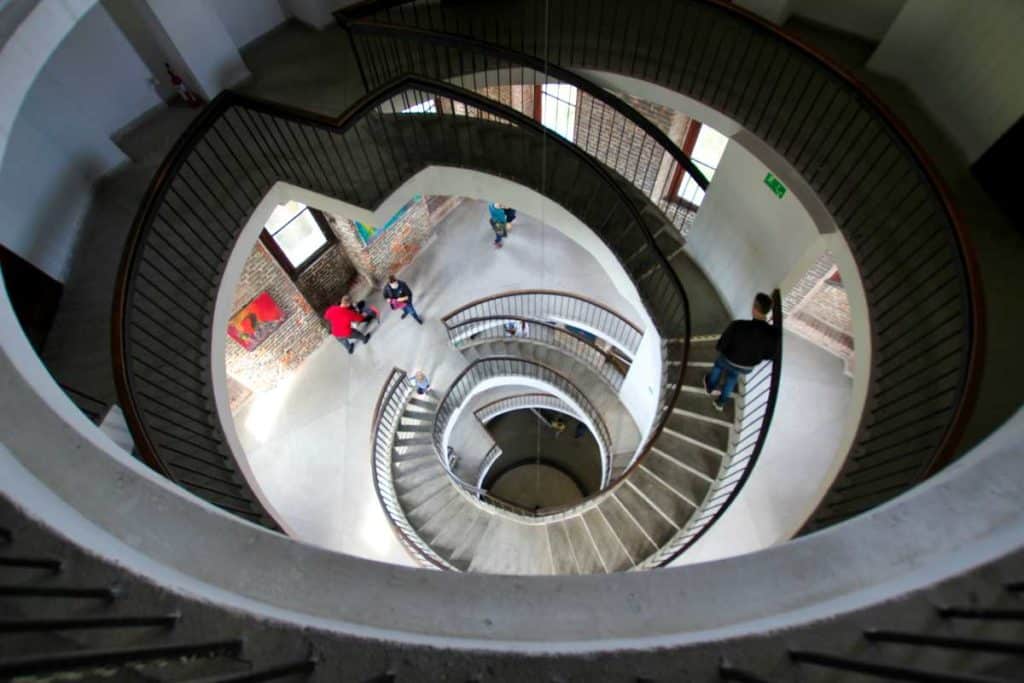
Copernicus Museum
- ul. Katedralna 8, open: Tu-Sa. 9 am to 6 pm, Sun. 9 am to 4 pm, Adult 9 zł, reduced 5 zł
For decades there has been a museum dedicated to Copernicus at the eastern end of the Cathedral hill. Here you can inform yourself about Copernicus and his work and astronomy in general, and there are also temporary exhibitions on various astronomical topics.
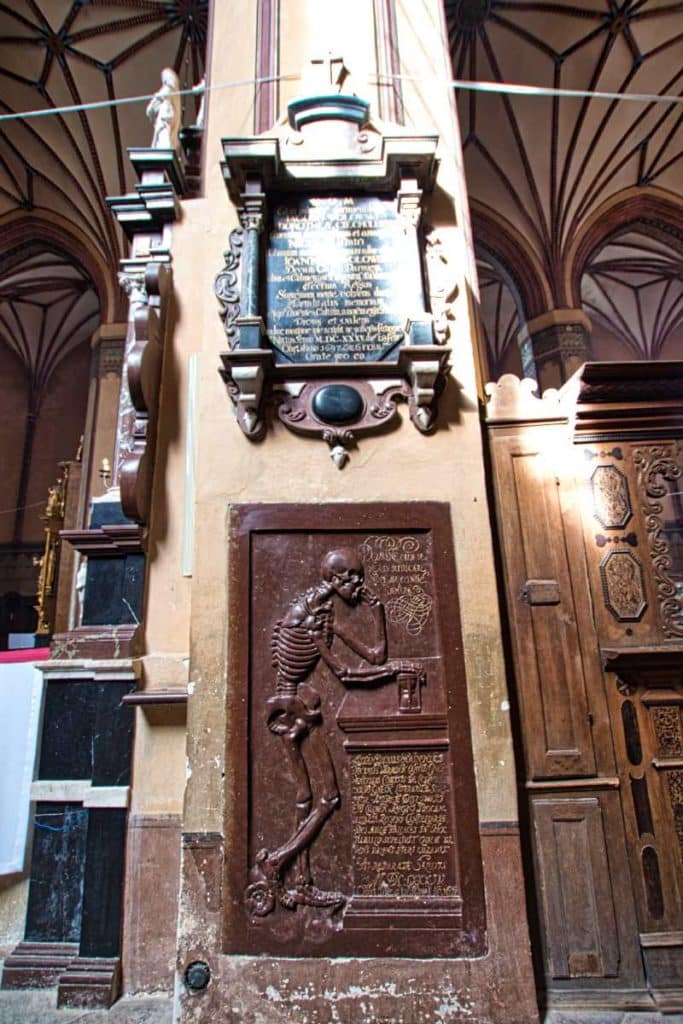
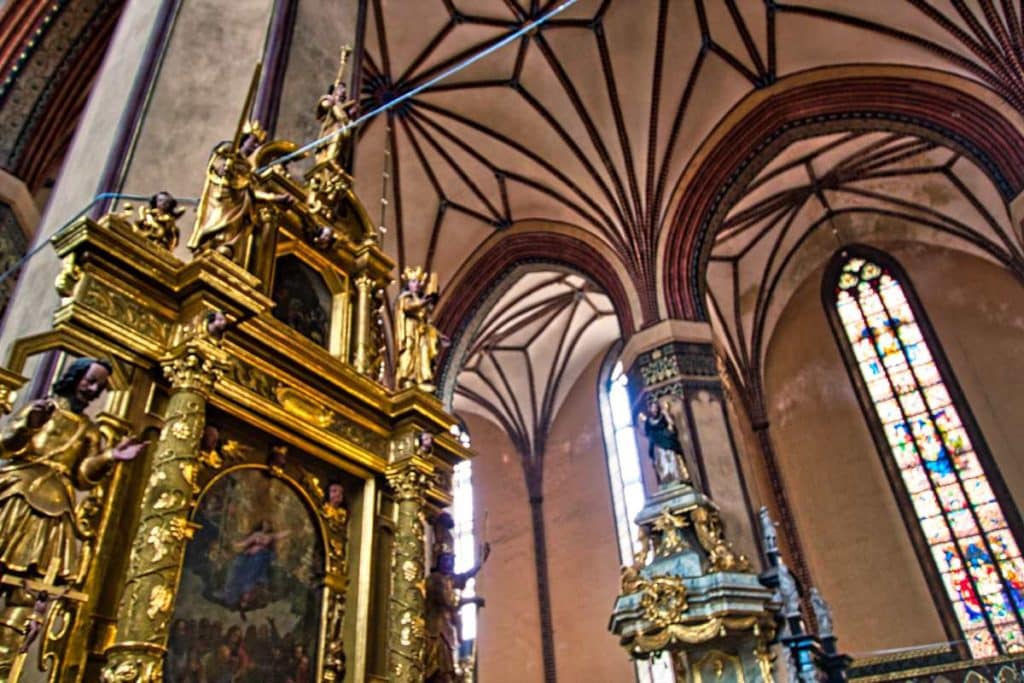
Frombork Cathedral
- ul. Katedralna, opened: Tue-Sa. 10 am to 3 pm, Sun. noon to 3 pm, Adults 10 zł, reduced 7 zł
It is not clear when the first church was built here. However, the year 1329, when the construction of the brick church in its present form began, is considered to be certain. Before the nave and the magnificent west porch were completed, several decades were to pass. Relatively unusual for a church of that time: there are not one or two massive main towers, but a small tower on each of the four sides of the church.
Splendor wherever the eye looks
The interior has a star vault typical of the Warmia region and is characterized by two arcades. The Gothic walls form the framework for a large number of sacred works of art, which were created from the Middle Ages to the 19th century. Not much remains of the original Gothic interior, as the church was looted by Polish and Swedish troops, among others.
The high altar shows a so-called crescent moon Madonna and was made in the mid-18th century in the baroque style, using black and pink marble.
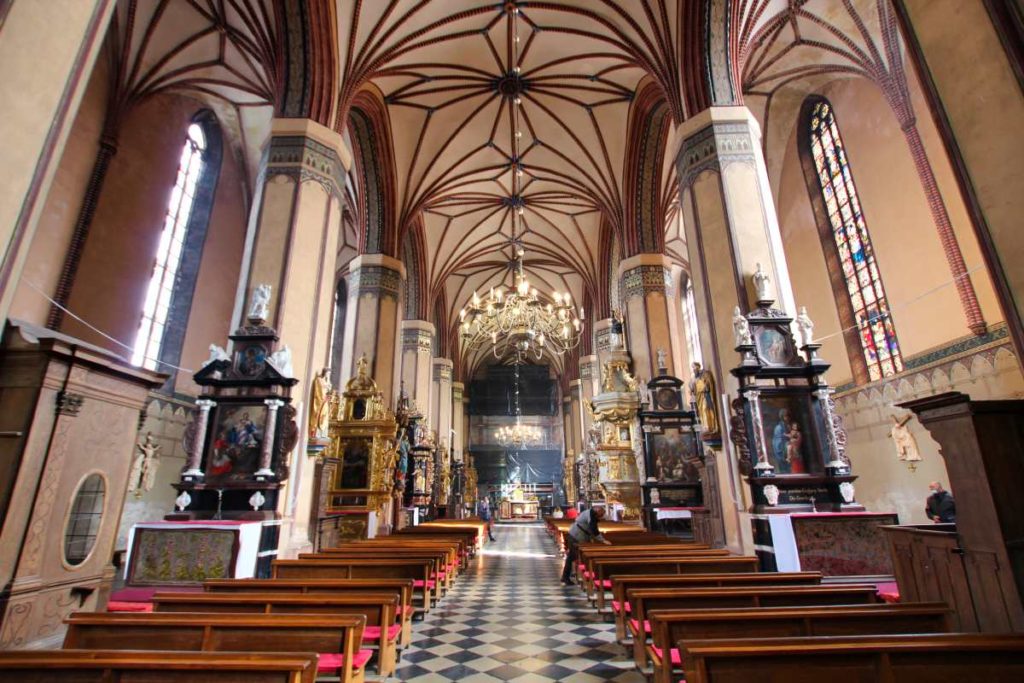
The organs are considered by experts to be among the best in the country and were made by the Gdansk master builder Daniel Nitrowski in the 17th century. The splendid, colorful exterior panelling has been preserved to this day and is one of the jewels of Frombork Cathedral.
The most beautiful chapel of the church
One of the most beautiful places of the cathedral is the Chapel of the Redeemer. This small extension is often called the Szembek Chapel after its initiator and was built in 1732 in the baroque style. Szembek wanted to use the chapel not only as a final resting place for himself, but also as a central place where prayers were said for the protection of the Warmia from wars, and had numerous relics brought here for this purpose. The most important Warmian artists of the time were commissioned to decorate the chapel. Even the grille that separates the chapel from the actual church is a feast for the eyes. Marble works, beautiful polychromes, pilasters and painted busts of saints are grouped around the central altar and testify to the artistic wealth of the region at that time.


Copernicus’ Tomb
For a long time it was not clear where Copernicus found his final resting place. In 2008, however, somone came up with the idea to compare a tooth with two hairs found in a book in Sweden that Copernicus had read. They could be connected to Copernicus and subjected to DNA analysis. This could be assigned to a skull that was found in the cathedral. Even before this, it was assumed that Copernicus must have been buried here, since he spent his last years in Frombork. Now one had certainty and could finally dedicate a small grave to the genius. The skull in a small coffin can be seen today through a glass plate.
In the heart of Frombork
Sure, at first all visitors of Frombork head for the Cathedral Hill, but there is also a lot to discover in the small lower town!
Parish church in need
Frombork is a rather poor village, which can be seen in the old parish church. The huge building was used as a heating and power station during the socialist era and has been increasingly dilapidated in recent years. It has remained in this pitiful state for years and is still waiting for restoration.
Museum in the hospital
- ul. Stara 6, opened: Tue-Sun. 9 a.m. to 4 p.m., adults 9 zł, reduced 5 zł
To the east of the town center lays the Hospital of the Holy Spirit. Built in the 15th century, the hospital has several well-preserved 15th century murals, including a depiction of the Last Judgement. Today it houses a museum on the history of medicine.
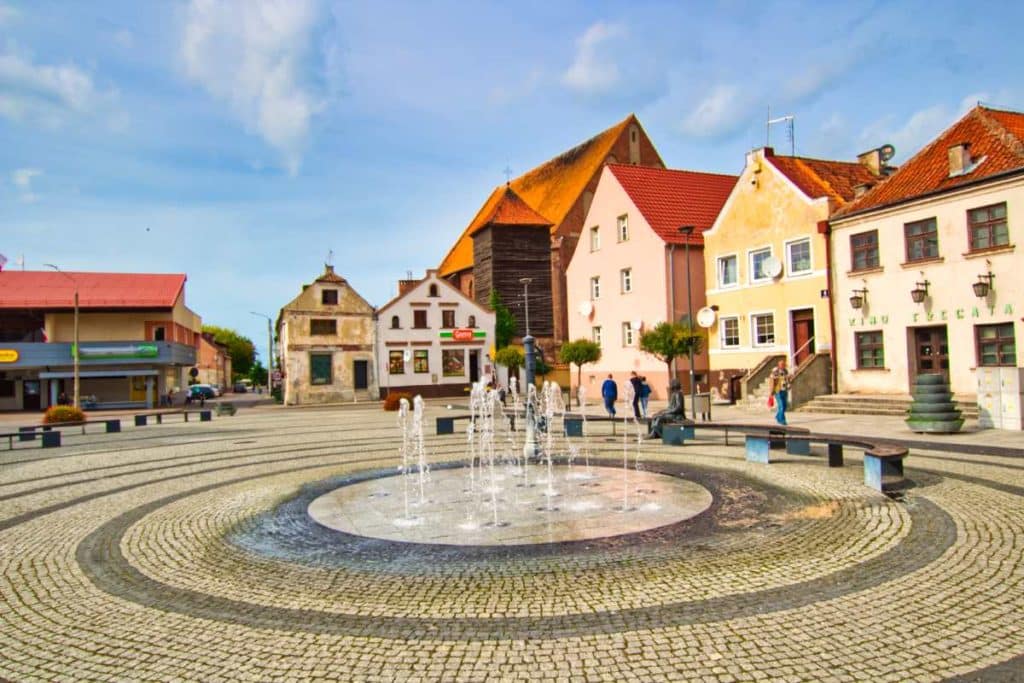
On the way on the market place
Frombork’s market place is small and cozy. Here you can see that the place has its best times behind it, some buildings are still showing their plaster. Even the old cinema, which once existed here, no longer exists today. Nevertheless this is a nice place to take a break on one of the benches.
Poland’s oldest water tower
- ul. Elbląska 2, open: Fri-Sun 11am to 4pm
The secular landmark of Frombork is the massive water tower. It dates back to 1571 and is the oldest in Poland. A system that was revolutionary for that time enabled the Cathedral Hill to be supplied with water through wooden pipes, a technique that had only been used in Europe until then in Augsburg. Here is another viewpoint from which you have the best view of the Cathedral Hill and the Vistula Lagoon. The tower also houses a café.
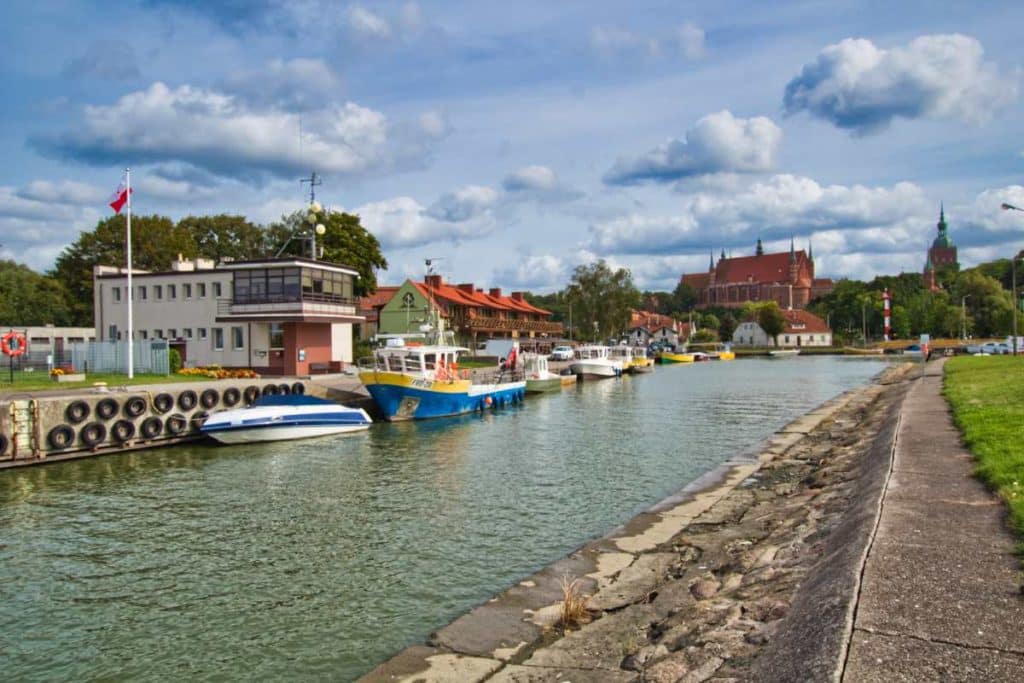
Discoveries on the canal
From the water tower there is also a canal to the small harbour, which was only uncovered a few years ago. Here you can stroll along the water and watch the ships and boats.
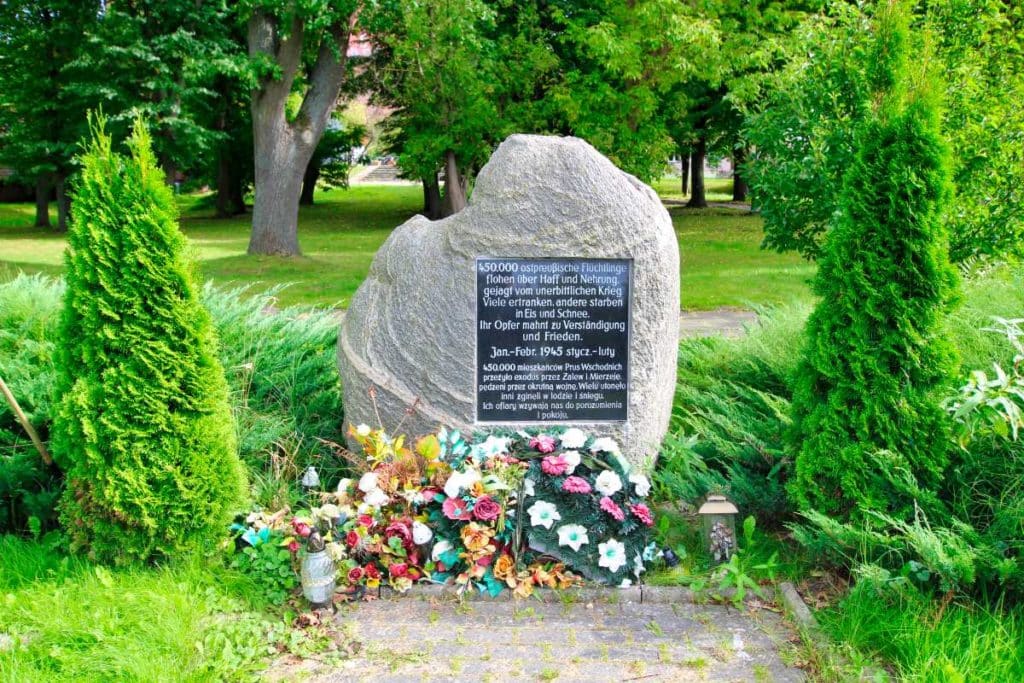
Right at the beginning of the canal there is a memorial stone on the right. In German and Polish, it commemorates the 450,000 East Prussians who fled across the lagoon in January and February 1945.
By boat to the lagoon
Enough Frombork? Then get on the ship and off to the Vistula Lagoon! The provider Żegluga Gdańska takes you to Krynica Morska. The relaxed trip takes about one and a half hours. Afterwards you can hike on the lagoon, which already belongs to Pomerania. Krynica Morska is a seaside resort and has several beautiful beaches. But beware: The trips usually start from Frombork only twice a day, so you only have to go back twice a day. So check the website for the exact departure times so that you don’t have to spend the night on the beach, which is of course very attractive … For the trip from Frombork and back you have to pay 42 zł (erm. 30 zł).
What are your favorite places in Frombork? Write it down in the comments!


